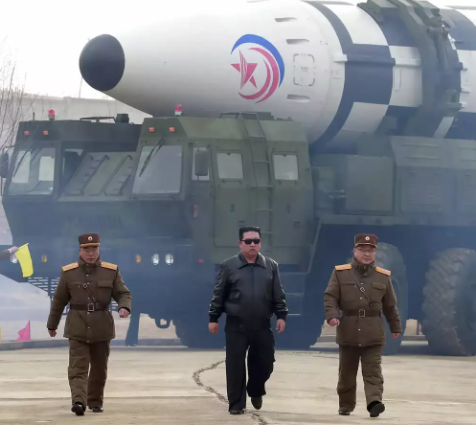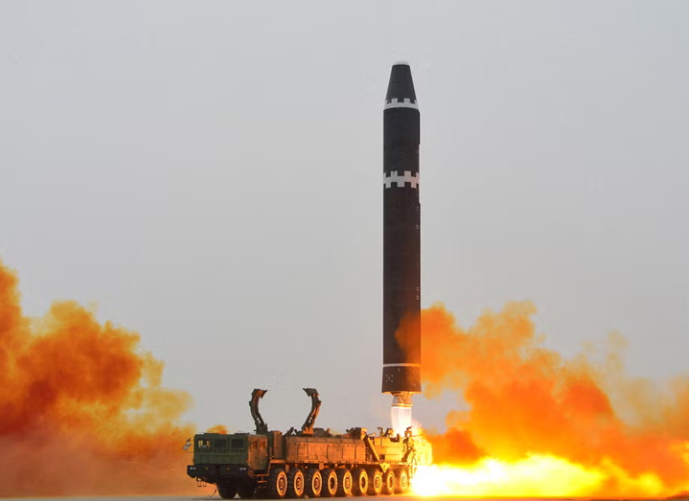North Korea’s New Missile Reaches 7,000 km Altitude, Heightens Global Tensions
Pyongyang — North Korea again showed his missile power by conducted a significant test of its Hwasong-19 intercontinental ballistic missile (ICBM) last week, with the missile reaching an altitude of 7,687 kilometers. This powerful missile, ordered for launch by North Korean leader Kim Jong-un himself, was tracked closely by South Korea and Japan as it soared through space before descending into the sea between Japan and Russia. It marks a new show of strength in North Korea’s military arsenal, with Kim describing the launch as a necessary military action.

The missile, which ultimately traveled 1,000 kilometers, took off from a site near Pyongyang and landed in the waters 200 kilometers west of Japan’s Okushiri Island after an 87-minute flight. Kim Jong-un declared, “The Democratic People’s Republic of Korea (DPRK) will not change its policy of strengthening nuclear forces.” South Korean and Japanese military sources have shared that North Korea’s powerful new missile continues to demonstrate an extended reach and heightened capabilities.
Speculation of Russian Support in Test
According to analysts in Seoul, the launch might have included technical support from Russia, intended to test improvements in the missile’s boosters and stability at lower altitudes. This week also saw North Korea deploy 8,000 soldiers to support Russian operations in Ukraine’s Kursk region. This unusual move of sending North Korean troops abroad has provoked strong reactions from the U.S., with Defense Secretary Lloyd Austin warning that any involvement in combat would make these soldiers legitimate military targets.

Hwasong-19: Capable of Reaching the U.S.
The Hwasong-19 missile was previously tested in December 2023, where it demonstrated a projected range of up to 15,000 kilometers—enough to reach the continental United States. This latest launch, on October 31, 2024, has drawn sharp condemnation from South Korea, Japan, and the U.S. A White House statement called the test “a grave violation of multiple United Nations Security Council resolutions” and stressed that such launches “unnecessarily increase tensions and threaten regional security.”
Chinese Foreign Ministry spokesperson Lin Jian also weighed in, urging a diplomatic resolution. Lin reiterated China’s stance on the importance of peace and stability in the region and called for a political solution to the Korean Peninsula’s long-standing issues. Meanwhile, North Korean state media outlet KCNA lauded the Hwasong-19 as “the world’s most powerful strategic missile,” with the North Korean missile program continuing its rapid expansion.
According to the CNS North Korea Missile Test Database, North Korea’s missile program dates back 40 years, with the country having conducted 264 missile tests since 1984, most of which have occurred in the last decade. In 2022 alone, North Korea set a record with 40 launches, underscoring its growing ambitions and military capabilities.

